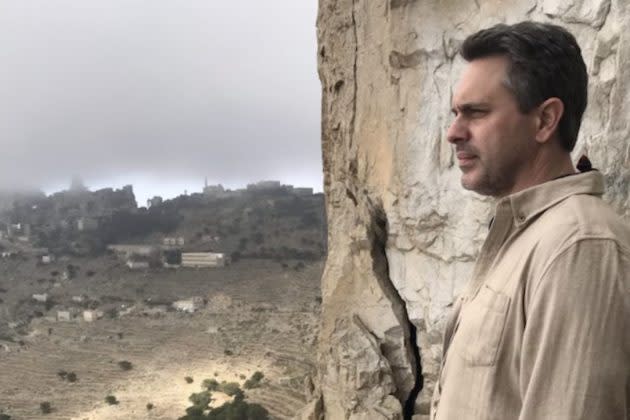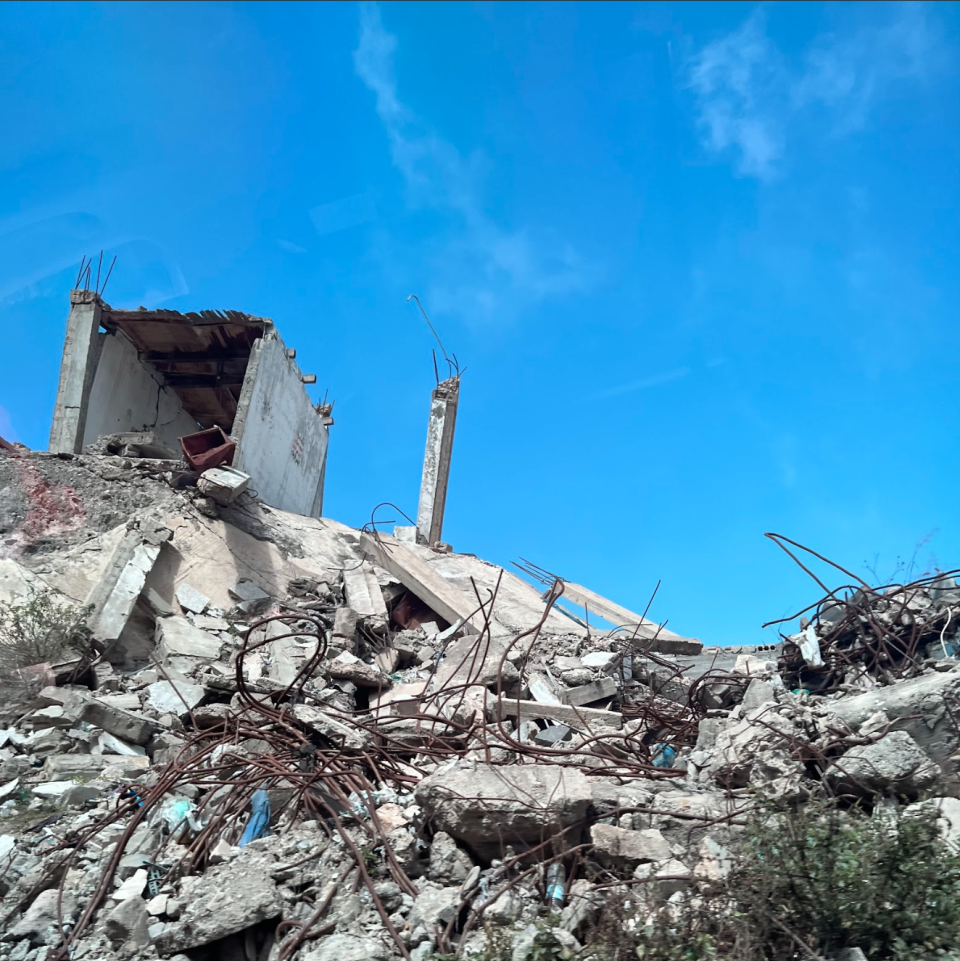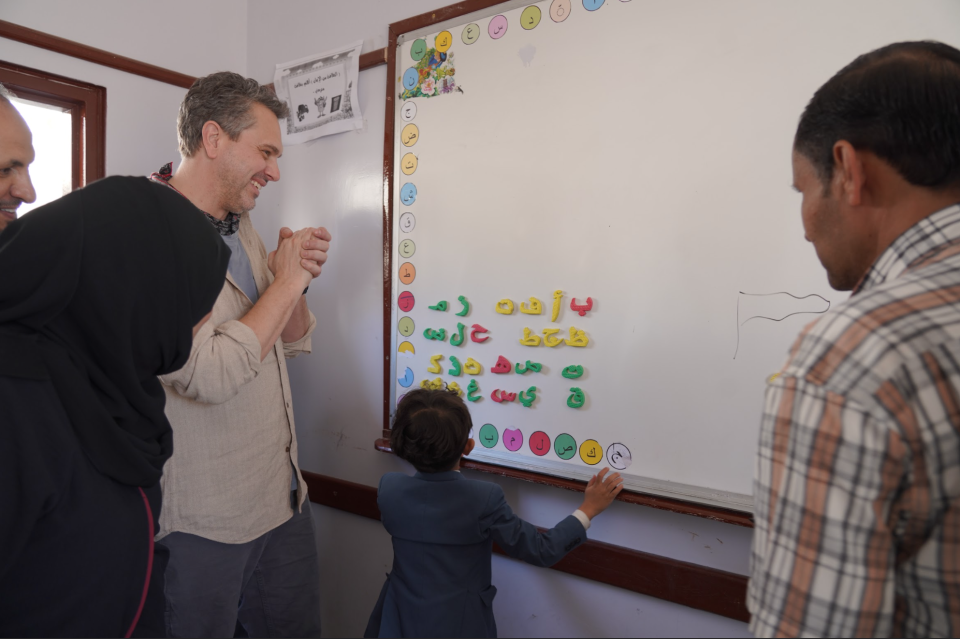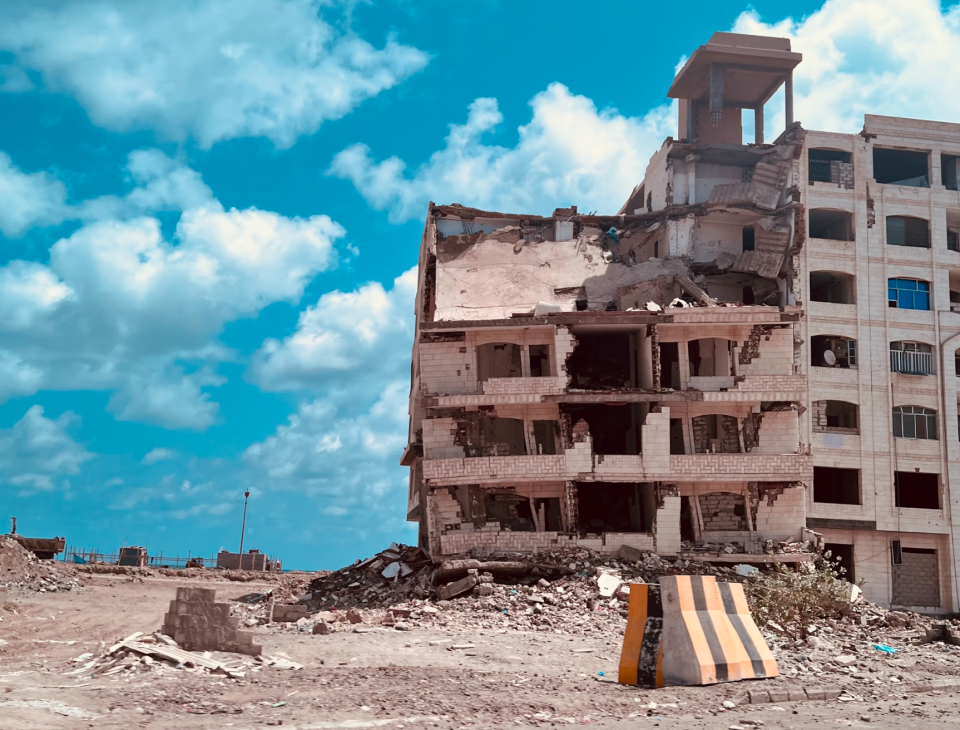‘A Comprehensive Failure of Humanity’: Thomas Sadoski on the Crisis in Yemen and Why Hollywood Must Step Up
- Oops!Something went wrong.Please try again later.
- Oops!Something went wrong.Please try again later.
- Oops!Something went wrong.Please try again later.
- Oops!Something went wrong.Please try again later.

Several human rights organizations have called the war-caused levels of famine and illness in Yemen the worst humanitarian crisis in the world. Why, then, is the suffering of the country and its people so rarely discussed in America?
Thomas Sadoski, the actor best known for starring as Don Keefer in Aaron Sorkin’s “The Newsroom,” has a few ideas about that.
More from Variety
Thomas Sadoski Joins Patricia Clarkson's Lilly Ledbetter Biopic in Key Role (EXCLUSIVE)
Lucy Liu, Thomas Sadoski to Star in Romantic Drama 'Last Weekend in May'
“I became aware of what was going on in Yemen shortly after the most recent Civil War began back in 2014,” he says. “And as the humanitarian crisis continued to get worse and worse, I saw it move further and further towards back pages of the newspaper, if at all mentioned. There were only a small handful of journalists who were even talking about it — largely because a lot of people couldn’t get access. I, for whatever reason, was able to get that access.”
Sadoski is a founding ambassador of War Child USA, a group that travels to war zones to advocate for young people affected by armed conflict. He describes the organization’s ethos as “anti-colonialist,” as it “provides support and resources to local communities to build themselves back up” rather than adjudicating their needs from a Western perspective. “We trust the local communities to know better than we do.”
Wary of the ways celebrity philanthropy can become a project for vanity, Sadoski finds that War Child has given him a way to leverage his status in Hollywood for good. “At no point do I want to end up doing a ‘white man takes an adventure’ story. That doesn’t fucking interest me at all,” he says. “The very unique space that I occupy is that in my 25 years as a professional actor, there was enough to go back and see, ‘This guy is actually who he says he is.’ It’s this perfect spot, where they know that I’m not CIA, which is a legitimate fear. They don’t trust that journalists and NGO workers aren’t working for U.S. intelligence. But my job is as a storyteller. My job is to listen, to empathize and to communicate. And the one thing we really felt was true about the situation in Yemen is that the stories weren’t being told.”

Upon arriving in Yemen, Sadoski says that “the thing that immediately leaps out at you is the shocking level of child soldiery. Truckloads of kids, maybe 10 or 11 years old, armed to the teeth with AK-47s and 50 caliber machine guns in the back of their trucks.”
The widespread hunger becomes apparent next: “90% of males over the age of 13 years old are chewing a narcotic called khat every day; they get these Louis Armstrong-size wads in their cheeks, and it creates this green and white foam on the lips. It has the fringe benefit of being a hunger suppressant, which is a particularly helpful thing in a country in the midst of serious food insecurity issue — though ‘food insecurity’ is an NGO term. It’s a politician’s term. It’s more rightly called starvation. People are starving to death.”
On Sadoski’s first trip with War Child, he visited northern Yemen, which is associated with the Houthi rebellion opposed by Saudi Arabia and most Western nations, including the U.S. Upon meeting with women’s organizations that worked to secure rights and employment in the region, Sadoski recalls, “We were told straight up: ‘The only thing that these two warring factions can agree on his how best to screw us over as women.'”
“The first piece of graffiti that we saw was in English, so it was obviously written for people coming over, not the locals. It said, in giant letters: ‘We were born dead.’ That is not an uncommon refrain. The women that we met with told us that for them, it’s a 24-hour-a-day fight. They wake up fighting; they go to sleep fighting; they dream about fighting. I was sitting in rooms with women who were doctors, lawyers, teachers — people profoundly more educated and capable than I was, who couldn’t even go to the market by themselves. They had to be accompanied by their six-year-old sons, or have a piece of paper saying they’re allowed, and even that wasn’t enough.”
Things changed for Sadoski during a visit a Yemeni school. “I turned to the teacher and said, ‘These kids are so advanced!’ I had been sure I was in a kindergarten classroom — but I was in a classroom of eight-year-olds. The severe malnutrition stunted growth so much that these eight and nine-year-old kids looked like they were my daughter’s age, five-and-a-half or six. That’s when the insidiousness of long term starvation hit me, and things snapped into focus. I started noticing that all of the kids had this sort of copper hue to their hair. Because when you’re starving to death, the the minerals leach out of your body and the color drains out of your hair.”

“In that same town, I was taken to see 5,000 people living in what used to be a semi-pro soccer stadium. No light, no mattresses, no running water, no toilets,” he continued. “Streams of raw sewage running through the middle. Kids who were shirtless and shoeless. We had close to 150 years of combined humanitarian experience in our group, and everybody universally said it was the worst we’ve ever seen. It was hell. Not in a figurative, poetic way. It was literal hell. Everywhere you turned was a person in the last phases of an absolutely miserable existence. It breaks your heart on levels that, frankly, I haven’t even begun to unpack yet.”
Sharing these stories for Americans to hear is a major component of War Child’s purpose.
“I didn’t want pictures taken, because people are suffering enough. I didn’t want to participate in tragedy porn,” Sadoski says. “I wanted to come back with stories, not images. I talked to mothers, fathers, doctors, teachers, generals, the head of national security. I talked to people on the street, whoever I could, just to ask what the fuck is going on. Everybody was telling me the same story: Kids are starving to death, and there’s not enough aid coming into the country.”
Armed with those stories, War Child returns to the U.S. to implore anyone anyone with power to help raise funds. That often happens in Washington D.C.; Bernie Sanders, Cory Booker, Rashida Tlaib, Alex Padilla and Kirsten Gillibrand are among the Capitol Hill figures with whom Sadoski has met. And while he’s found those meetings heartening, he knows that relying on the U.S. government for money is an uphill battle, especially as other conflicts, such as those in Ukraine and Gaza, have commanded so much of the country’s attention on foreign relations and for aid. The U.N. has warned that global humanitarian spending is in a crisis of its own. It’s likely that fewer American dollars will get to Yemen next year, which is a reality Yemenis cannot afford. “We’re talking about a population where over 70% of them are reliant on humanitarian aid to survive,” Sadoski says. “We’re on the verge of a comprehensive failure of humanity.”
So during the holiday giving season, Sadoski has shifted some of his focus to his own industry. When he considers how Hollywood engages with conflicts on the other side of the world, Sadoski feels frustrated with his colleagues. “All throughout history, our job as artists has been to hold up the mirror to humanity. But it feels like for so many of us, the mirror turned around, and we’re looking in it ourselves,” he says. “That scares me. I believe in the power of a working class family putting their pocket change in a jar and donating that at the end of the month more than I believe in Hollywood showing up to do anything. We have the opportunity to do real good. It just requires us to actually know what the fuck we’re talking about — which doesn’t take a lot. Do the reading and the research.”
“War, when you see it up close, when you smell it, when you taste it, when you literally have to peel it off of you, is only counteracted by one thing. It sounds trite, but it’s love. And love requires you to listen. It requires you to see the impact you’re having. It requires you to walk up next to pain and be present with it. And particularly in an industry that celebrates and commodifies the stories of war — I say this as somebody who’s made war movies — if you’re going to tell those stories in your art, you have a responsibility in your life to tell the stories of the people who are affected by it, who had no business being affected by it at all.”
“Give up your platform for other people once in a while,” he adds. “Give from your extraordinary paychecks that some of us in our industry get handed. But be smart about it. Take the time to learn about where it’s going and why.”
Having done humanitarian work for years before joining War Child, Sadoski empathizes with people who struggle to find the right way to engage with crises like these, especially given the history of aid gone wrong.
“I’ve been very picky about the organizations that I work with,” he says. “I watched in Haiti after the earthquake, when people rolled in with an unbelievable amount of rice and wheat to help feed people — but what about the rice farmers? You just put all of them out of business. They had the opportunity to sustain their own communities if the resources had been given to them, if the infrastructure around Haitians helping Haitians had been rebuilt.”

At the same time, he says, “Living in a democracy, I don’t feel allowed to use ignorance as an excuse. I came across War Child and saw, ‘Oh my god, they work entirely with local partners. 99% of their staff are local to the conflict regions that they’re working in. Only 1% is the person who’s coming in to be the connection point between the resources coming in from the West. With other organizations, that percentage is often flipped, with only 1% of people making money being from the population who really needs it. These are people who are trying to lift themselves up out of unimaginable chaos. They need the paycheck, and the purpose. So we’re finding ways to empower women. The backbone of so many communities is the wisdom and strength and power contained within the women. War Child is going in and rebuilding communities from that point of view. With that ethos in mind, I was totally sold.”
War Child also prides itself on focusing on ending human suffering, regardless of the political lines it happens across. When asked how the organization navigates the fact that the U.S. aligns itself with southern Yemen, while people all over the country need support, Sadoski says, “By moving beyond it. By simply saying, those are your lines in the sand, not ours. Our loyalty is to the children, to people. I will talk to any human being if it means that I can work to save the lives of children. I don’t care who I have to go through in order to do it. We’re one of the few organizations that didn’t leave Afghanistan when the Taliban came back. Leave? And do what, sign a letter? You think the Taliban cares? No. We’re gonna stay and do our work, and if they want to come talk to us about it, we’ll talk to them.”
“Governments come and governments go,” Sadoski concludes. “But the needs of the people, and the power of a child who believes in a hopeful future, is something that never ever wanes.”
To learn more about War Child USA and donate, visit warchildusa.org. Read about Variety’s Power of Women honoree Carey Mulligan’s work with sister organization War Child UK here.
Best of Variety
Sign up for Variety’s Newsletter. For the latest news, follow us on Facebook, Twitter, and Instagram.

